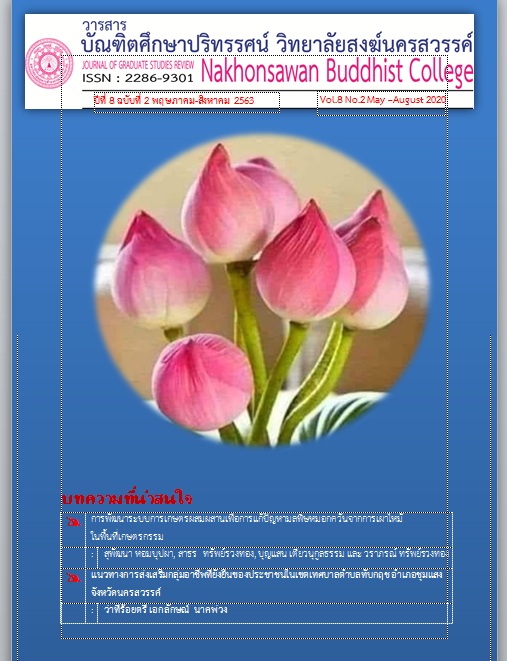The Abbot’s Quality of Life in Bo Thong Sub-District, Bang Rakam District, Phitsanulok Province
Main Article Content
Abstract
This qualitative research to study the abbot’s quality of life in Bo Thong Sub-district, Bang Rakam District, Phitsanulok Province consisted of the following objectives; 1) to study problems and obstacles in the abbot’s quality of life Bo Thong Sub-district, Bang Rakam District, Phitsanulok Province, 2) to study factors affecting the abbot’s quality of life in Bo Thong Sub-district, Bang Rakam District, Phitsanulok Province, and 3) to propose guidelines for the development the abbot’s quality of life of Buddhist monks in Bo Thong Sub-district, Bang Rakam District, Phitsanulok Province. Target population group for data collection and analysis included 5 abbots in the area of Bo Thong Sub-district, Bang Rakam District, Phitsanulok Province. The results of research were found that:
In general, most monks were elderly infected with chronic illnesses and diseases such as hypertension, diabetes. In accessing government health services, they were still unable to access the service as expected. This could be seen in time of illness when they would go to buy medicine themselves or they would go to a private clinic. Therefore, it was wasting personal expenses and their health care was discontinuous. With rear exercise, therefore, it weakened their health and energy. Some abbots gained more weight that increased with age resulting in easier tiredness than usual when performing their duties. In addition, the abbots lacked knowledge and attention in health care. Factors affecting the abbot’s quality of life in 4 aspects including personal characteristic factors, leading factors, facilitating factors and supplementary factors were related and affected the abbot’s quality of life. But, the results might vary by individual, housing condition and environment of each person. Recognition of benefit of action and creation of awareness would be an emphasis for the abbots to take better care of their health.
Therefore, the guidelines for the development of the abbot’s quality of life should conform to the routines of 10 principles such as alms-round, sweeping the temple and pagoda courtyards etc. There should be a place for exercise in accordance with Buddhism which was proper for monkhood. There also should a focus on activities of body movement in a systematic manner with specification of frequency, length, strength, duration of warming-up, duration of right body relaxation. Regular action would create capacity, keep away diseases and build good health.


